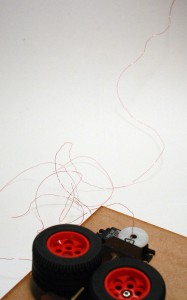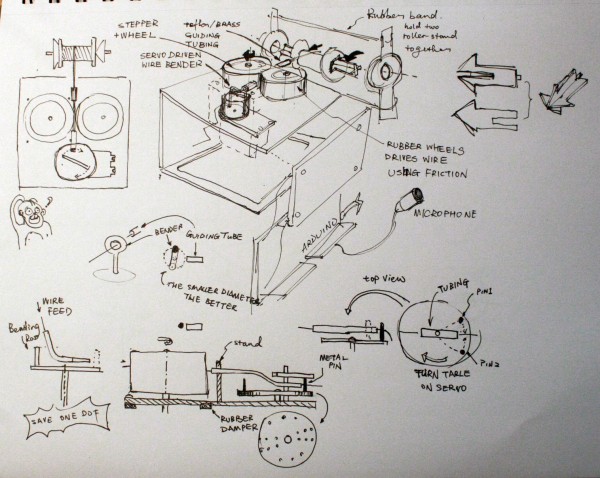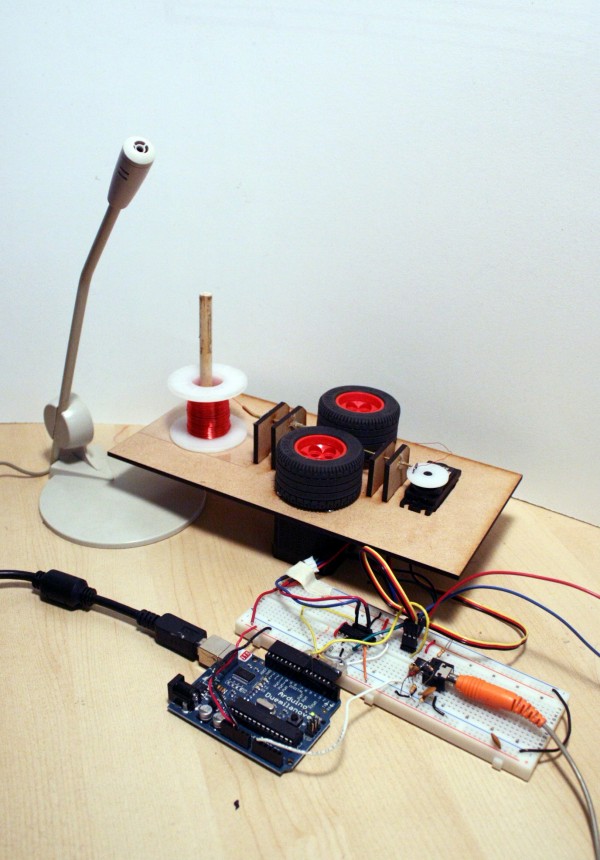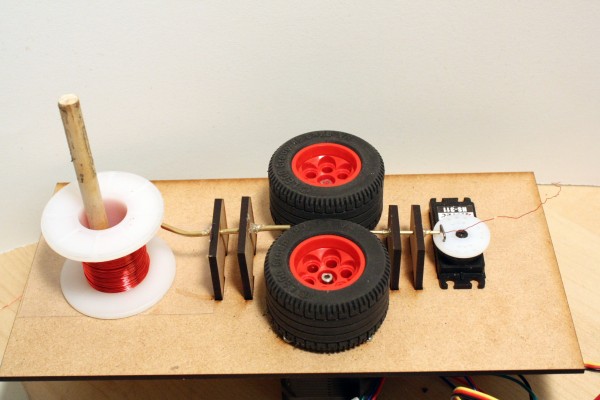speaker
speaker is an interactive gadget that sculpts wires of sound as people around it talks.
Inspirations
The idea started from a discussion about interactive fabrication with Golan and Karl, when we brainstormed what we could take from real life to inform the creation of artifacts. Later when I saw Peter Cho’s takeluma, I decided to make a machine that physically make the shape of sound.
For a while I considered cutting/extruding pasta into tasty sound, but food safety and dough feeding made it a bit difficult given the time I had (still hope to do it someday!). Wire bending, at the same time, has an interesting play with the shape of sound wave. It also offers some unexpectedness as wire extrudes and bends into form.
I collected some manual and commercial wire bending examples and came up with my design. A stepper drives a pair of rubber wheels and push the wire forward. A servo waits on the end and busily turns around, bending wire to various angles. Extra support and guide are added to keep wire flying without tangling.
Implementation
Material List
A test of “speaking” arcs
speakCurve from Cheng on Vimeo.
Sound is a rich source of data; you can pick volume, pitch, tempo, timbre, (signal noise ratio, emotional impact…), or any of them combined and map them into shapes. In this prototype, I picked volume. As user speaks into the mic, arduino compares the averaged volume of small sections of time. For raising/lowering value, servo bends wire CCW/CW respectively.
Future work
A lot of time was devoted to separating power sources for microphoen, stepper, and servo, so that they don’t interfere. Still have issues with stepper. One major problem of the system is real time response. Default arudino stepper control is blocking – sound sampling is paused when stepper turns. Even one step each time brakes the flow. Need to find another control strategy, and an optimal update rate.
Beyond the engineering issues, I would also like to consider where this system will go. Would it be a real time jewelry maker? Toy? Exibition piece? Would it be interactive? real-time interactive? Or just a wall of names and corresponding bended wire? Could wire be bended to 3D labyrinth? Could the project be scaled up and generate public sculpture? Or be kinetic sculpture itself (snake robot??) …





Hi Cheng – here are the group comments from the crit.
——————————–
This has a lot of potential. Let’s talk. -GL.
Woahhh…ambitious and awesometastic! Great job making your own machine! Very cool use of real-time audio input. And very great for the time you had! I think the only restraint here is that you had so little time. Another idea that may help is to use a stiffer wire. Also, it would be cool, if this were placed in a museum or something, if people who interacted with it could cut off and take their piece of generated wire home with them. But, very, very successful for the time you had! 🙂 –Amanda
a
Very nice! Experiment with different servos to solve your engineering issues, maybe? Maybe you only need a micro servo to get the force you need, letting you maintain precision? -SB
Great job, Cheng! It would be cool if you worked on this for your final.